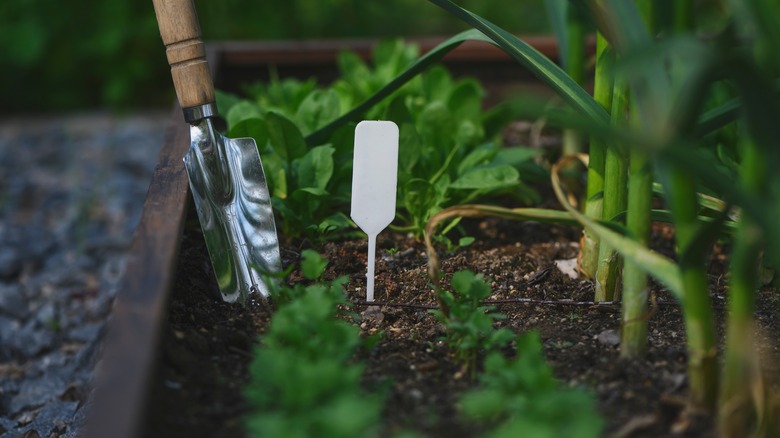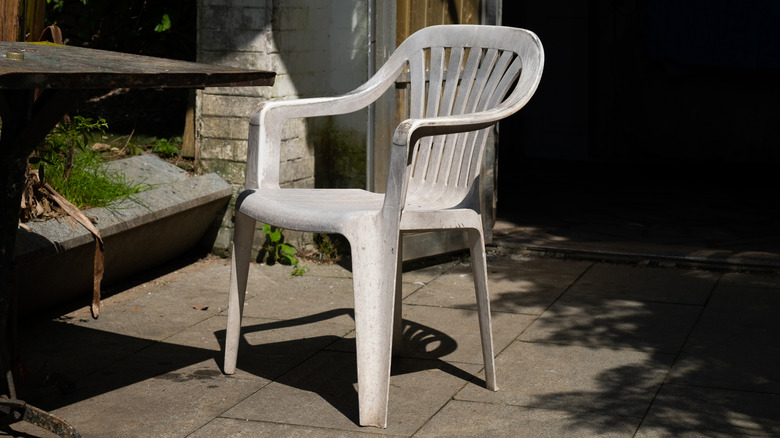Repurpose These 2 Items To Create Affordable And Colorful Raised Garden Beds
It's no wonder raised beds are a popular gardening choice: there are many designs for raised beds to choose from, and you can customize a raised bed's size and shape to even the smallest of outdoor spaces. But, beginner gardeners and sustainability experts alike may balk at the idea of buying raised beds from their garden center, where prefab beds can be well over $100 each. Why spend so much money when you can upcycle items you may already have at home?
If you've asked yourself that question before, or if you're a fan of adorable garden decor, we have just the DIY for you. YouTuber Robbie from the channel Robbie and Gary Gardening Easy shows us how to make adjustable, shapeable raised beds from two household staples: lawn chairs and storage totes. As Robbie points out, this DIY is a great way to salvage old, sun-damaged lawn chairs that would otherwise be headed to the dump.
How to try this DIY
Robbie first paints old lawn chairs past their prime in a variety of playful colors using tester paints from the hardware store. She then stacks a storage container with drainage holes drilled into the seat on each chair. She fills most of the totes with a combination of twigs, kitchen scraps, paper shreds, hay, and soil to create a compost system within each tote. Robbie also leaves one or two of the containers empty so that she can organize trimmings and leaves for composting as she maintains the garden, and places buckets to catch drainage beneath the garden totes to reuse the nutrient-rich water.
Robbie tops off the new garden totes with some plants perfect for raised beds and voila: a nearly instant garden results! This method makes for a colorful take on raised beds, is easy to assemble, and allows you to relocate the mini-beds as needed. We loved the playful horseshoe shape Robbie arranged with this DIY, and as she points out, it's both cute and practical, allowing for easy watering access.
Pros and cons of this method
Robbie mentions a few benefits to this method, including easy, elevated access for watering and pest prevention due to the elevation of the beds. The added height likely makes maintenance of these gardens easier for people who cannot or should not bend frequently. We love the sustainable spirit of this DIY, which upcycles existing materials on a budget, and the built-in composting system Robbie was able to make with each tote is useful. Another pro of this DIY is its customizability: you could easily rearrange chairs to fit an oddly shaped yard or paint each chair to match your other lawn decor.
There are a few downsides to this DIY worth mentioning, however. Though the adjustability of this setup is appealing, we wonder how feasible it is to rearrange your raised beds once each bed is established and becomes heavier with watering. This method may be more accessible than others if you are mobility-impaired, but we're not sure it holds up at later stages when heavy plants and soil might inhibit rearrangement. Robbie explains that this method works well for plants that might compete for root space in a shared bed, but the smaller size of these totes compared to most raised beds could create problems for plants that do poorly when rootbound. This DIY isn't ideal if you're sold on the convenience of a consolidated raised bed and requires more assembly and planning than most raised bed setups.

